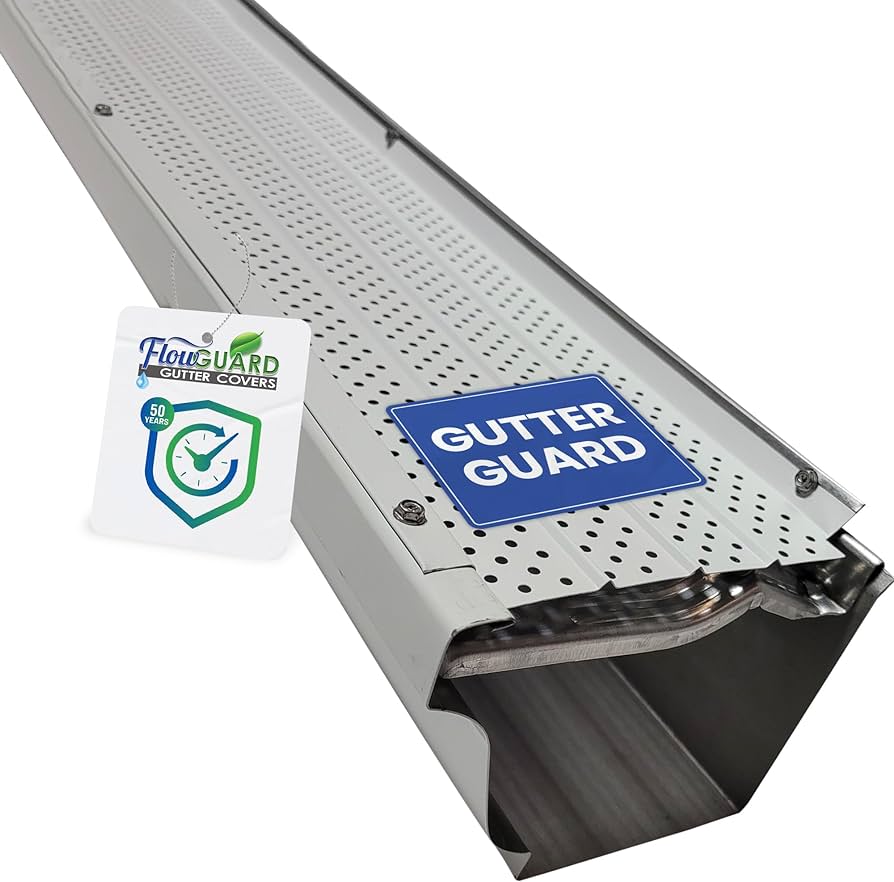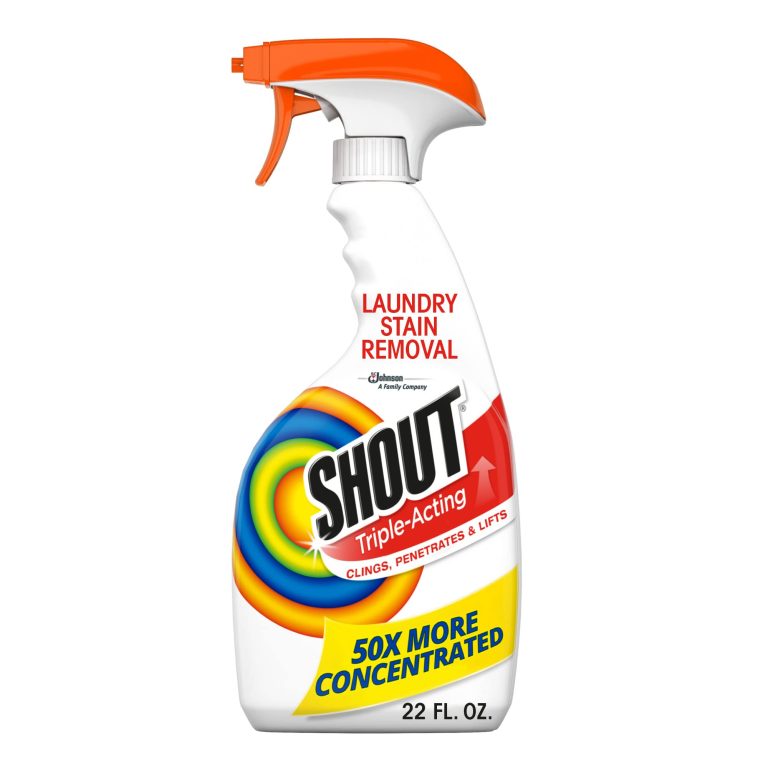9 Best Gutter Guards in 2024: Top Picks for Seamless Home Maintenance
Tired of climbing ladders to clean out your gutters every season? Gutter guards might just be your new best friend. These handy devices keep leaves, debris, and pests out of your gutters, ensuring your home stays protected from water damage without the constant hassle.
In this article, you’ll discover the 9 best gutter guards on the market. Whether you’re looking for something budget-friendly or top-of-the-line, we’ve got you covered. Say goodbye to clogged gutters and hello to peace of mind.
Type 1: Mesh Gutter Guards
Mesh gutter guards are popular due to their simple design and effectiveness in keeping debris out. They consist of a metal sheet with tiny holes that allow water to pass through but block leaves and other debris.
Pros of Mesh Gutter Guards
- Effective Debris Blocking: Mesh gutter guards excel at preventing larger debris, like leaves and twigs, from entering your gutters. This keeps your gutters clear and helps reduce maintenance.
- Durable Construction: These guards are often made from stainless steel or aluminum, which resists rust and corrosion. This ensures they last longer and withstand harsh weather conditions.
- Easy Installation: You can install many mesh gutter guards without professional help. This DIY-friendly feature makes them a cost-effective solution for homeowners.
- Versatile Fit: Mesh guards come in various sizes and types, making them compatible with most gutter systems. This versatility allows you to find a perfect match for your home.
- Small Debris Can Accumulate: While effective against large debris, smaller particles like pine needles and roof grit can still enter through the mesh. This may necessitate occasional cleaning.
- Potential Clogging Issues: If not installed correctly, mesh guards can lead to water overshooting the gutters. Proper installation is crucial to avoid clogging and overflowing problems.
- Cost Variation: While some mesh gutter guards are affordable, high-quality options might be pricier. Ensure you balance cost with quality to protect your home effectively.
- Maintenance Requirements: Although they reduce the frequency of gutter cleaning, mesh guards may still require occasional inspection and cleaning to maintain optimal performance.
Type 2: Foam Gutter Guards
Foam gutter guards offer a simple and cost-effective solution for preventing debris buildup in your gutters.
Pros of Foam Gutter Guards
- Easy Installation: You can install foam gutter guards by simply placing them in the gutter. No tools or professional help are required.
- Cost-Effective: These are generally more affordable than other types. You can find foam gutter guards at a lower price point, making them budget-friendly.
- Lightweight: Foam guards are lightweight, reducing strain on your gutters. This is especially beneficial for older systems.
- Porous Design: The foam allows water to flow through easily while blocking larger debris. This means fewer clogs and smoother water drainage.
- Adaptable Size: Foam guards can be cut to fit any gutter size. This allows more customization based on your specific needs.
- Can Retain Moisture: Foam can hold moisture, potentially leading to mold and mildew. This might require more frequent checks.
- Not Very Durable: Foam guards may deteriorate faster over time. Exposure to sunlight and elements can reduce their lifespan.
- May Compress Over Time: The foam can compress, reducing effectiveness. This can allow smaller debris to clog your gutters.
- Potential for Plant Growth: Seeds can get caught in the foam and sprout. This can lead to unwanted plant growth in your gutters.
- Maintenance Needs: You will still need to clean them periodically. While reducing the frequency, they don’t eliminate maintenance altogether.
Type 3: Surface Tension Gutter Guards
Surface Tension Gutter Guards use the principle of surface tension to channel rainwater into the gutter while keeping debris out.
Pros of Surface Tension Gutter Guards
Minimal Maintenance: You’ll appreciate the low maintenance requirement. Unlike Foam Gutter Guards, they don’t retain moisture or promote plant growth.
Durable Design: Made of sturdy materials like aluminum or stainless steel, these guards offer long-term durability.
Efficient Water Flow: Surface tension design ensures effective water diversion even during heavy rainfall, reducing overflow risks.
Aesthetic Appeal: They blend well with most roofing materials, enhancing your home’s exterior look.
Pest Prevention: Their solid construction deters pests like birds and rodents from making gutters a home.
Cons of Surface Tension Gutter Guards
Higher Cost: Initial costs are often higher compared to Mesh or Foam Gutter Guards due to materials and installation.
Professional Installation: You may need professional help to install them properly, adding to the overall cost.
Performance in Light Rain: In light rain or drizzle, water might not flow as effectively into the gutter, causing some spillover.
Debris Accumulation: Smaller debris like pine needles and seeds can stick above the surface, requiring occasional cleaning.
Compatibility Issues: They might not fit all gutter types, especially older or non-standard systems, potentially necessitating replacements.
Surface Tension Gutter Guards offer a robust, low-maintenance solution but come with higher costs and some performance caveats.
Type 4: Brush Gutter Guards
Brush Gutter Guards consist of bristled cylinders that sit inside your gutters to keep out debris while allowing water to flow through.
Pros of Brush Gutter Guards
- Easy Installation: You can easily install brush guards yourself without any special tools or equipment, saving on professional installation costs.
- Low Maintenance: These guards require minimal upkeep, mostly needing occasional checks and simple cleaning to remove accumulated debris.
- Cost-Effective: Brush guards are generally affordable, making them a cost-effective solution for keeping your gutters clear.
- Effective Debris Filtering: They effectively trap larger debris like leaves and twigs, preventing clogs in your gutters.
- Durability: Made from weather-resistant materials, brush guards can withstand various weather conditions and last for several years.
- Accumulated Debris: Smaller debris like pine needles may get caught in the bristles, which can require frequent cleaning.
- Pests and Mold: Wet debris trapped in the brushes can sometimes attract pests or cause mold growth, posing potential problems.
- Water Flow Interruption: During heavy rains, the bristles might slow down water flow, leading to possible overflow issues.
- Not Seamless: Brush guards may not provide a completely seamless look, which might not be appealing from an aesthetic perspective.
- Fit Issues: Ensure proper sizing, as mismatched sizes can compromise efficiency and require adjustments or replacements.
Type 5: Micro-Mesh Gutter Guards
Micro-mesh gutter guards are designed with fine mesh to block small debris while allowing water through. They’re a popular choice due to their effectiveness and durability.
Pros of Micro-Mesh Gutter Guards
- Effective Filtration: Micro-mesh guards excel at filtering out small debris like pine needles and shingle grit.
- Durable Material: Typically made from stainless steel or aluminum, these guards resist rust and corrosion.
- High Water Flow: The micro-mesh allows rainwater to flow smoothly into the gutters, preventing overflows.
- Low Maintenance: Minimal upkeep is required, reducing the need for frequent gutter cleaning.
- Pest Prevention: The fine mesh keeps out pests like birds and rodents that could nest in your gutters.
- Higher Cost: They tend to be more expensive than other types due to their high-quality materials and design.
- Complex Installation: Professional installation may be necessary to ensure optimal performance and fit.
- Potential Clogging: While they block small debris, micro-mesh can still accumulate fine particles over time, requiring occasional maintenance.
- Ice Dams: In colder climates, micro-mesh guards can contribute to ice dams if not installed correctly.
Installation Tips for Gutter Guards
Installing gutter guards keeps your gutters clean and functional, protecting your home from water damage. Whether you’re tackling it yourself or hiring a pro, these tips will help ensure a smooth installation.
DIY Installation Tips
Prepare Your Tools. Gather essentials like a ladder, work gloves, screwdrivers, and a garden hose. Having everything on hand speeds up the job.
Clean the Gutters. Remove leaves, dirt, and debris before installing guards. This ensures a solid fit and prevents clogging from the start.
Follow Manufacturer Instructions. Read the guide that comes with your gutter guards. Specific brands may have unique steps or requirements.
Check for Repairs. Look for any damage to your gutters or roof. Fix leaks or loose sections before proceeding with the guard installation.
Test the Installation. After installing, run water through the gutters using a garden hose. This helps check if the guards are functioning properly and allowing water to flow freely.
Professional Installation Advice
Select a Reputable Installer. Research and choose a company with good reviews and experience in installing gutter guards. This ensures quality workmanship and proper installation.
Get Multiple Quotes. Contact several installers to compare prices and services. This helps you find the best deal and understand the market rate.
Ask About Warranties. Inquire about warranties for both the product and the installation. This provides peace of mind and ensures long-term protection.
Schedule at the Right Time. Plan the installation during a dry season to avoid delays due to rain. This also ensures the materials set properly without weather interference.
Inspect the Work. Once the pros finish, inspect the installation. Ensure all guards are securely in place and function correctly by running water through the gutters.
Properly installed gutter guards save you from future headaches and costly repairs. Whether you go the DIY route or hire a professional, these tips ensure your gutters stay in top shape.
Maintenance and Care for Gutter Guards
Regular maintenance ensures your gutter guards remain effective year-round.
Routine Maintenance Tips
Clean Debris: Clear leaves and twigs off the gutter guards periodically to prevent clogging.
Inspect for Damage: Check for cracks or other damages during routine inspections, especially after storms.
Rinse with Water: Use a garden hose to rinse off dirt and smaller debris that can accumulate over time.
Trim Surrounding Vegetation: Keep branches and foliage trimmed to minimize debris falling onto the gutter guards.
Check Fasteners: Ensure that all screws and fasteners are secure, preventing the guards from shifting or falling.
Signs That Your Gutter Guards Need Replacing
Frequent Clogging: If gutters clog often despite having guards, it’s a sign they’re no longer effective.
Visible Damage: Look for cracks, rust, or warping that compromise the guard’s integrity.
Gaps and Holes: Noticeable gaps or holes allow debris through, necessitating replacement.
Sagging or Detachment: If guards are sagging or detached from the gutters, they need replacement to maintain proper function.
Excessive Overflow: Persistent overflow during rain suggests the guards aren’t channeling water correctly and require replacing.
Conclusion and Top Recommendations
Choosing the right gutter guard is essential for protecting your home from water damage. Proper installation and regular maintenance will keep your gutter guards functioning effectively. Look for signs like frequent clogging or visible damage to know when it’s time for a replacement. By staying proactive, you can avoid costly repairs and ensure your gutter system works smoothly year-round.
For top recommendations, consider options like micro-mesh for fine debris, reverse curve designs for heavy rainfall, or foam inserts for easy DIY installation. Each type has unique benefits, so select the one that best fits your specific needs and local weather conditions.
Investing in quality gutter guards and maintaining them regularly will save you time, money, and stress in the long run. Make an informed choice and enjoy the peace of mind that comes with a well-protected home.
Frequently Asked Questions
What are the different types of gutter guards?
Various types of gutter guards include mesh screens, reverse curve guards, brush guards, foam inserts, and micro-mesh guards. Each type has unique features aimed at preventing debris from clogging the gutters.
Can I install gutter guards myself?
Yes, you can install gutter guards yourself if you are comfortable with basic DIY tasks. However, professional installation is recommended for more complex systems or if you want to ensure optimal performance.
How do gutter guards prevent water damage?
Gutter guards prevent water damage by keeping debris out of the gutters, ensuring that water flows freely through the drainage system and away from your home’s foundation.
What maintenance do gutter guards require?
Gutter guards require regular inspection for damage, cleaning to remove any accumulated debris, rinsing with water, trimming surrounding vegetation, and checking fasteners to maintain their effectiveness.
How often should I clean my gutter guards?
You should inspect and clean your gutter guards at least twice a year, typically during the spring and fall, to ensure they remain free of debris and function properly.
What are signs that my gutter guards need replacement?
Signs that gutter guards need replacement include frequent clogging, visible damage, gaps or holes, sagging or detachment, and excessive overflow during rain.
Can gutter guards completely eliminate the need for gutter cleaning?
While gutter guards significantly reduce the need for cleaning, they do not eliminate it entirely. Periodic maintenance is still necessary to ensure optimal performance and prevent any blockages.
How do I inspect for damage in gutter guards?
To inspect for damage, visually check for cracks, holes, or areas where the gutter guard has detached from the gutter. Make sure to address any issues promptly to avoid water damage.
Why is regular maintenance of gutter guards important?
Regular maintenance is crucial to ensure that gutter guards remain effective all year round. This helps prevent costly repairs and ensures that water is properly directed away from your home.
What tools do I need to clean gutter guards?
Basic tools for cleaning gutter guards include a ladder, gloves, a garden hose, a small brush or leaf blower, and possibly a screwdriver or pliers for checking fasteners.






